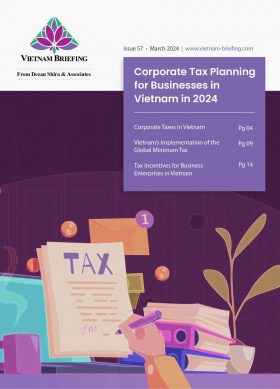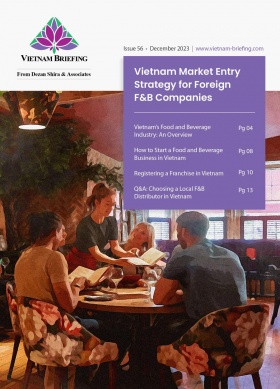Vietnam Unveils Ambitious Master Plan for North Central and Central Coastal Regions
Vietnam released a new Master Plan for the North-Central and Central Coastal regions in May, emphasizing sustainable development, economic growth, and environmental preservation.
On May 4, 2024, Vietnam’s Prime Minister released Decision 376/QD-TTg, officially approving the Master Plan for the North Central Coast and Central Coast Region for the Period 2021-2030, with a Vision Towards 2050 (hereinafter, the “Master Plan”).
Vietnam’s North Central and Central Coast regions, home to 11 provinces boasting extensive coastlines, stand poised at the forefront of a transformative journey towards oceanic economic development. Spanning over 100 kilometers each, these coastal provinces, including notable areas like Khanh Hoa, Binh Thuan, and Phu Yen, present a promising canvas for harnessing the vast potential of marine resources.
In alignment with the nation’s vision for rapid and sustainable development, these regions are strategically focused on spearheading Vietnam’s oceanic economy. Embracing a holistic approach, the emphasis extends beyond mere economic growth to the creation of modern, green, and technologically advanced infrastructure. This forward-looking strategy encompasses the development of urban areas characterized by resilient architecture and a harmonious integration with the natural environment, resilient to the challenges posed by climate change.
Looking ahead to 2050, the vision appears both ambitious and yet attainable: the establishment of at least two dynamic urban centers and a multitude of industrial, service, and international cooperation hubs along the coastline, rivaling counterparts in the Asian region. Simultaneously, efforts are underway to cultivate modern rural communities steeped in national cultural identity, fostering a balanced and inclusive development trajectory.
At its core, the roadmap to realizing these ambitions hinges on a strategic focus on oceanic economic sectors, underpinned by technological innovation and digital transformation. From bolstering productivity to fostering industries like semiconductor manufacturing and financial services, the blueprint for development is marked by a relentless pursuit of progress and sustainability. Moreover, investments in science, technology, and research infrastructure are poised to propel these regions into the vanguard of innovation, ensuring a prosperous and resilient future for generations to come.
In this article, we delve into the key components and objectives of the Master Plan, highlighting its possible impact and broader role in the development of Vietnam.
Key development goals and priorities
The Master Plan envisions the North Central Coast and Central Coast region as a rapidly evolving, vibrant, and sustainable area by the year 2030. Central to this vision is the establishment of a robust marine economy, driving the region towards heightened prosperity. With a focus on enhancing livelihoods, the plan aims to elevate the average per capita income to exceptional levels, fostering a higher quality of life for residents.
Moreover, the Master Plan emphasizes the development of a comprehensive infrastructure network resilient to natural disasters and adaptable to climate change. This infrastructure backbone will support the emergence of major industrial and service hubs, along with coastal economic zones and urban systems that adhere to national and regional standards. Beyond economic considerations, the region is positioned to serve as a pivotal maritime gateway.
Preservation and promotion of the region’s rich cultural, historical, and ecological heritage are integral facets of the plan. By safeguarding marine, island, and forest ecosystems, the Master Plan not only ensures environmental sustainability but also underscores the importance of cultural and historical preservation.
Economy
On an economic level, the Master Plan outlines a concerted effort to achieve an average annual Gross Regional Domestic Product (GRDP) growth rate of approximately 7.5-8 percent between 2021 and 2030. Specifically, by 2030:
- The GRDP is expected to expand by 2.5 to 3 times compared to 2020, with the service sector accounting for about 38-39 percent;
- The industrial-construction sector around 40-41 percent; and
- The agriculture, forestry, and fisheries sector comprising roughly 10-11 percent of the total GRDP.
Additionally, product taxes excluding subsidies are projected to represent 10-11% of the GRDP. Notably, the average per capita GRDP at current prices is forecasted to reach approximately VND 165 million (approx. US$6,485), reflecting significant economic advancement.
In tandem with economic expansion, the Master Plan prioritizes the development of a sustainable urban system, targeting an urbanization rate exceeding 48 percent. Efforts will be made to establish at least one city at both regional and international levels, serving as hubs of economic activity and innovation.
There is also a focus on comprehensive and sustainable development of new rural areas, with the aim of integrating them effectively with urbanization processes. By 2030, it is anticipated that over 90 percent of communes will meet the standards of new rural areas, with 50 percent achieving advanced new rural area standards, facilitating balanced development across urban and rural landscapes.
Moreover, the Master Plan underscores the importance of transitioning towards a digital economy, circular economy, and green economy, leveraging enhanced digital and data infrastructure. There is a targeted objective to attain a proportion of the digital economy comprising approximately 30 percent of the GRDP by 2030, reflecting a strategic shift towards sustainable and technology-driven economic models.
These initiatives not only promise economic growth but also position the region as a leader in innovative and environmentally conscious practices on the national and global stage.
Culture and society
The Master Plan prioritizes the preservation and promotion of the diverse cultural identities within our society. Through the development of a comprehensive cultural infrastructure network, policymakers aim to safeguard the rich heritage of ethnic groups while providing platforms for their expression and celebration.
This also means recognizing the economic potential of cultural industries. By supporting initiatives that nurture artistic talents and facilitate the production and dissemination of cultural products, the Vietnamese government aims to create sustainable opportunities for cultural expression while contributing to local economies.
Central to this vision is the accessibility of cultural institutions to all members of society. By ensuring that every provincial administrative unit is equipped with cultural centers or cultural-art centers, museums, and libraries, Vietnam strives to provide spaces for cultural engagement, education, and dialogue, thereby enriching the lives of citizens across the nation.
In terms of poverty reduction, the ultimate goal is to achieve a sustained annual reduction rate of 1-1.5 percent, ensuring that no individual or community is left behind in our pursuit of prosperity and well-being.
In terms of healthcare, the Master Plan pledges to build a comprehensive healthcare system that meets the needs of all citizens, with a target of 35 hospital beds and 15 doctors per 10,000 people by 2030. Additionally, the Vietnamese government aims to invest in education and training to equip its workforce with the skills necessary to thrive in a dynamic and competitive global market, ensuring that 75-85 percent of the workforce is trained, with 35-45 percent holding diplomas or certificates by the same year.
Environment
In terms of environmental protection and maintenance, the Master Plan highlights the following goals:
- Maintenance of a stable forest coverage rate of 54 percent;
- Achievement of 100 percent clean water access in urban areas and 80 percent in rural areas;
- Collection of 90 percent of solid waste from urban households, with 40 percent processed through circular economic models; and
- Treatment of domestic wastewater to standards and promoting reuse, with a target of over 50 percent coverage.
Additionally, the plan mandates thorough treatment of all environmentally polluting facilities and the implementation of centralized wastewater treatment systems in industrial zones. Targets include:
- Reducing plastic waste in the sea by 75 percent;
- Ensuring marine conservation areas are free of debris; and
- Collecting and treating all hazardous and solid waste according to environmental standards in coastal regions.
Infrastructure development
In terms of infrastructure development, the Master Plan focuses on creating a comprehensive system that includes transportation networks like roads, ports, airports, and urban railways connecting to national railways.
By 2030, there will be over 1,554 km of expressways. Additionally, emphasis is placed on the development of renewable energy sources like solar and wind power, along with infrastructure for communication, urban areas (particularly coastal cities), irrigation, flood control, and climate adaptation.
Vietnam’s North-Central region attracting investment
This long-overlooked area is now attracting attention from both domestic and global investors, propelled by factors such as support from international businesses and backing from local authorities.
Foreign investment in the North-Central region reached approximately US$2 billion in 2023 alone, marking a solid 39 percent increase from the previous year. Nghe An province, in particular, has emerged as a key investment destination, attracting a record US$1.6 billion in foreign investment.
Quang Tri province, in particular, stands out as an attractive destination for investors. Its abundance of talent and upcoming infrastructure projects, such as the construction of a new airport, make it a prime location for industrial park development. Sumitomo Corp., a leading Japanese trading company, has already begun selling lots in an industrial park in Quang Tri, signaling the region’s appeal to foreign investors.
The entry of tech giants like the Taiwanese contract manufacturer Foxconn, known for its partnership with Apple, underscores the region’s growing appeal to global players. Foxconn’s decision to establish a factory in Nghe An, as part of its supply chain diversification efforts, has spurred interest from other companies in the Apple ecosystem, further fueling investment momentum in the region.
As stakeholders align their efforts and investments with the goals outlined in the Master Plan for Vietnam’s North-Central Coastal regions, the stage is set for the broader region to thrive and make substantial contributions to the national economy.
About Us
Vietnam Briefing is published by Asia Briefing, a subsidiary of Dezan Shira & Associates. We produce material for foreign investors throughout Asia, including ASEAN, China, and India. For editorial matters, contact us here and for a complimentary subscription to our products, please click here. For assistance with investments into Vietnam, please contact us at vietnam@dezshira.com or visit us at www.dezshira.com.
Dezan Shira & Associates assists foreign investors throughout Asia from offices across the world, including in Hanoi, Ho Chi Minh City, and Da Nang. We also maintain offices or have alliance partners assisting foreign investors in China, Hong Kong SAR, Dubai (UAE), Indonesia, Singapore, Philippines, Malaysia, Thailand, Bangladesh, Italy, Germany, the United States, and Australia.
- Previous Article Trends in Vietnam’s Banking Industry and 2024 Outlook
- Next Article Complying with Vietnam’s Personal Data Protection Decree: New Publication








